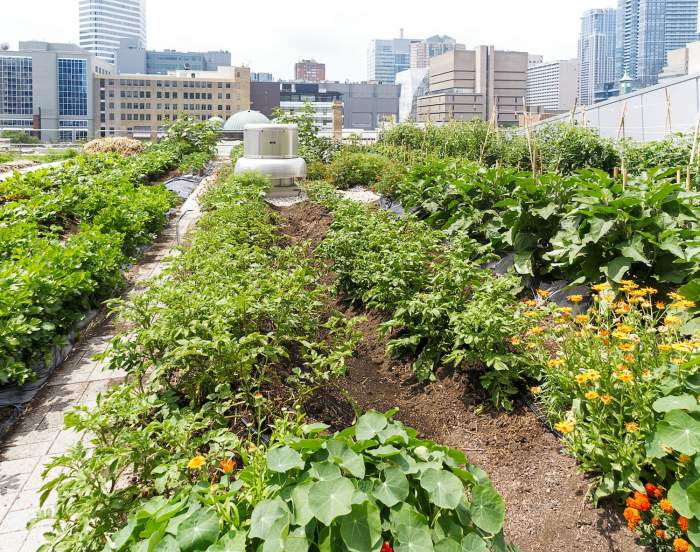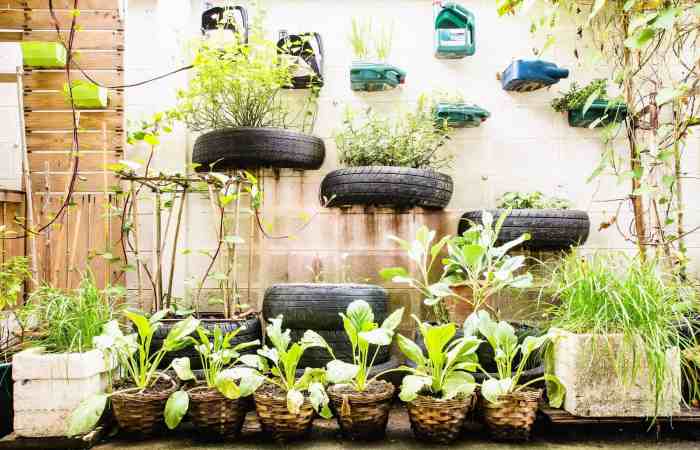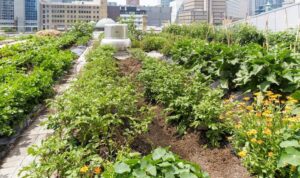Urban gardening is not just a hobby – it’s a lifestyle. Dive into the world where plants thrive amidst skyscrapers and asphalt, bringing a touch of nature to urban dwellers.
From transforming balconies into lush gardens to using innovative techniques, urban gardening is redefining sustainable living in the city.
Benefits of Urban Gardening

Urban gardening offers numerous advantages for individuals and communities alike. It not only provides access to fresh produce but also fosters a sense of community and connection with nature right in the heart of the city.
Environmental Impact
Urban gardening plays a crucial role in positively impacting the environment. By growing fruits, vegetables, and herbs locally, it reduces the carbon footprint associated with transportation and storage. Additionally, urban gardens help improve air quality, reduce urban heat island effect, and promote biodiversity in urban areas.
Promotion of Sustainability
Urban gardening promotes sustainability in urban areas by utilizing vacant lots, rooftops, and community spaces to grow food. It encourages composting, rainwater harvesting, and the use of organic practices, leading to a more sustainable and resilient urban environment.
Getting Started with Urban Gardening

Urban gardening is a great way to bring greenery into city living. Here are some tips to help you get started on your urban gardening journey.
Selecting the Right Plants
When choosing plants for urban gardening, consider the amount of sunlight your space receives. Opt for plants that thrive in your specific conditions, such as herbs like basil and mint for sunny spots, or ferns and spider plants for shadier areas.
Essential Tools and Equipment
To start your urban garden, you’ll need basic tools like a trowel, pruners, watering can, and gardening gloves. Consider investing in a small spade, hand rake, and plant markers to make gardening tasks easier.
Optimizing Space for Gardening
In urban settings, space is limited, so get creative with vertical gardening options like hanging planters, trellises, and wall-mounted planters. Utilize windowsills, balcony railings, and even rooftops to maximize your gardening space.
Urban Gardening Techniques
Urban gardening in urban areas usually involves limited space and resources compared to traditional gardening methods. Different techniques have been developed to adapt to these challenges, such as container gardening and vertical gardening.
Container Gardening
Container gardening is a popular urban gardening technique that involves growing plants in containers such as pots, buckets, or even old tires. This method is ideal for those with limited space, as it allows you to grow a variety of plants on patios, balconies, or even windowsills. It also provides better control over soil quality and drainage.
Vertical Gardening
Vertical gardening is another innovative technique for urban spaces, where plants are grown vertically on walls or structures. This technique maximizes space efficiency by utilizing walls and fences to grow plants, making it perfect for small urban gardens. It also adds a decorative element to the garden and can help insulate buildings.
Importance of Soil Quality and Composting
Soil quality is crucial in urban gardening, as urban soils are often contaminated with pollutants. Using high-quality soil mixtures and compost can help improve soil fertility and structure, leading to healthier plants. Composting organic waste not only reduces waste sent to landfills but also provides valuable nutrients to the soil, promoting plant growth and overall garden health.
Urban Gardening Challenges
Urban gardening in urban areas comes with its own set of challenges that gardeners need to overcome in order to be successful. From limited space and sunlight to dealing with pests and diseases, here are some common challenges faced by urban gardeners and strategies to tackle them.
Limited Space and Sunlight
One of the biggest challenges of urban gardening is the limited space available for growing plants. Many urban gardeners have to make do with small balconies, rooftops, or even windowsills for their gardens. Additionally, tall buildings and structures can block sunlight, making it difficult for plants to thrive.
- Utilize vertical gardening techniques such as hanging baskets, trellises, and wall-mounted planters to make the most of limited space.
- Choose plants that are well-suited for low light conditions, such as herbs like mint and parsley or leafy greens like spinach and lettuce.
- Consider using reflective surfaces or mirrors to bounce sunlight onto plants in shady areas.
Pests and Diseases, Urban gardening
Another challenge faced by urban gardeners is the presence of pests and diseases that can damage plants and reduce yields. Common pests in urban gardens include aphids, spider mites, and caterpillars, while diseases like powdery mildew and blight can also be problematic.
- Practice crop rotation and companion planting to reduce the risk of pest and disease infestations.
- Regularly inspect plants for signs of pests or diseases and take prompt action to prevent their spread.
- Use organic pest control methods such as neem oil, insecticidal soap, or homemade garlic spray to protect plants without harming the environment.
Managing Water Usage
Water management is crucial in urban gardening, especially in areas where water resources may be limited. Over-watering can lead to root rot and other problems, while under-watering can result in stunted growth and poor yields.
- Install a drip irrigation system or use soaker hoses to deliver water directly to plant roots and minimize evaporation.
- Water plants in the early morning or late evening to reduce water loss due to evaporation during the heat of the day.
- Collect rainwater in barrels or containers to use for watering plants, reducing reliance on municipal water sources.
